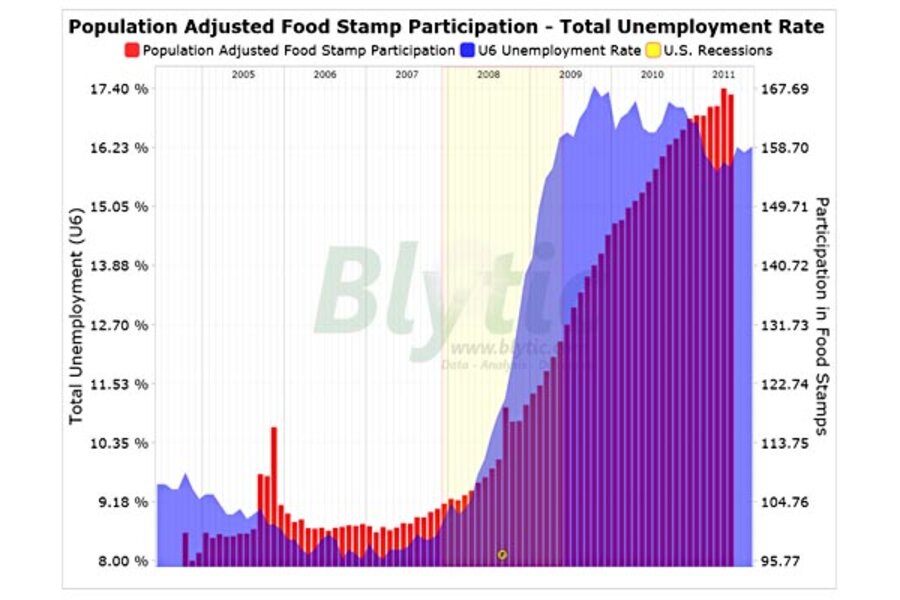Food stamp participation on the rise
As a logical consequence of the prolonged economic downturn it appears that participation in the federal food stamp program is continuing to rise.
In fact, household participation has been climbing so steadily that it has far surpassed the last peak set as a result of the immediate fallout following hurricane Katrina.
The latest data released by the Department of Agriculture shows that in June, 226,752 recipients were removed from the food stamps program (latest several months effected by disaster assistance), while participation continued to increased 9.47% on a year-over-year basis and household participation increased 11.76%.
Individual participation as a ratio of the overall civilian non-institutional population has increased 8.65% over the same period.
Participation continues to increase with nominal benefit costs climbing a lofty 9.74% on a year-over-year basis to $6.03 billion for the month.





